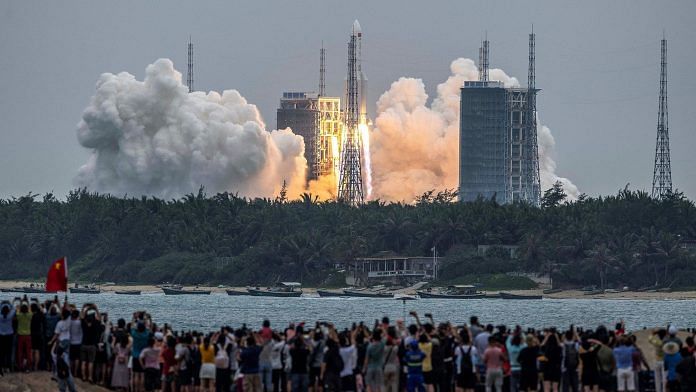Washington: The Pentagon said it expects a tumbling Chinese rocket to fall out of orbit and re-enter the Earth’s atmosphere on Saturday, though officials say it’s too early to predict where any debris will land.
Defense Secretary Lloyd Austin is being briefed regularly about the trajectory of the Long March 5B rocket core, which successfully put a portion of China’s first space station into orbit last month, Pentagon spokesman John Kirby told reporters Wednesday. Yet while the rocket is being monitored by U.S. Space Command, Kirby said there’s little the military can do about it at this point.
“We don’t have enough fidelity of information right now about re-entry and what that is going to look like to speak to specific actions one way or another,” Kirby said. “We’re just too far out right now to begin to speculate about what possibly could be in the offing here.”
The military’s 18th Space Control Squadron started posting daily updates on the rocket’s location on www.space-track.org this week.
Unlike most first-stage launch vehicles, which typically send their payloads into orbit and immediately fall back to Earth in a pre-planned area, the Chinese rocket carrying the space station module also went into orbit and some analysts think it is now tumbling.
The problem of space debris has been escalating as nations and private companies accelerate the deployment of miniature and low-Earth satellites. In most cases, satellites and space debris that re-enter the atmosphere tend to burn up before striking Earth or are directed so they crash in the ocean, far from land.
But not always.
America’s first space station, Space Lab, re-entered the atmosphere in July 1979, with some pieces falling into Western Australia. No one was hurt.
China drew criticism from then-NASA Administrator Jim Bridenstine last year when debris from another Long March 5B rocket re-entered the atmosphere. Citing local reports, SpaceNews said at the time that pieces of debris as long as 12 meters (39 feet) landed in Cote d’Ivoire.
Asked about the Long March’s re-entry on Wednesday, White House Press Secretary Jen Psaki said the U.S. wants to work with other space-faring nations to promote “responsible space behaviors.”
“It’s in the shared interests of all nations to act responsibly in space, to ensure the safety, stability, security and long term sustainability of outer space activities,” Psaki said. “We’re going to work with our international partners on that, and certainly addressing this is — is something we’ll do through those channels.”- Bloomberg
Also read: SpaceX launches 4 astronauts to ISS in reused rocket for NASA’s space mission



